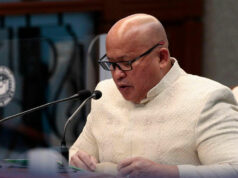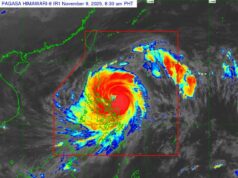AMLC reports hike in frozen drug-related assets to P1.4 billion
By Carmencita A. Carillo, Correspondent
DAVAO CITY — The Anti Money Laundering Council (AMLC) has frozen a total of P1.4 billion in illegal drug-related assets from 2017-2018, almost four times the P365 million held from 2013 to 2016.
AMLC Executive Director Mel Georgie B. Racela, speaking during the first Rehabinasyon National Anti-Drugs Summit held in the city last month, said the frozen assets value is equivalent to about P13 billion worth of illegal drugs taken out of the market.
A risk assessment conducted by AMLC in 2017 showed that the Philippines was used as a transshipment point for the proliferation of illegal drugs due to its strategic location and porous shorelines.
“Syndicates continue to innovate strategies to transport illegal drugs which ultimately goes to the streets; the use of financial institutions and products to move proceeds of illegal drugs was also apparent,” Mr. Racela said.
However, he added, the total assets subject to free order is just a number if not compared to the magnitude of the drug trade.
“If we have gotten rid of all laboratories in the country that means they will be importing two metric tons per month of drugs to meet the demand,” he said.
Multiply that with the selling price of P7,000 per gram of shabu (methamphetamine) and that would be worth P162 billion of annual gross revenues for drugs, he added.
A survey by the Dangerous Drugs Board showed an estimated 1.8 million drug users in 2015. In 2017 to 2018, there were 1.6 million drug surrenderers, 175,000 arrested, and 5,000 killed.
Mr. Racela said their job is to conduct financial investigations on cases referred to AMLC. Once the freeze order is filed, the Court of Appeals needs to act on it within 24 hours which means it has to issue the freeze order to include all covered institutions including banks, he explained.
“Upon issuance of freeze orders, banks should file a return, and should conduct an investigation within their branches and identify covered individuals identified by AMLC to be engaged in laundering or transacting proceeds of unlawful activities and freeze their assets,” he said.
A memorandum of agreement (MOA) was signed between the Philippine Drug Enforcement Agency (PDEA) and the AMLC on March 5 to strengthen coordination and exchange of information, including studies and researches on current and emerging trends in money laundering and financing for terrorism.
PDEA Director General Aaron N. Aquino referred to laundered drug money as those coming from the trafficking of illegal drugs and also financial terrorism.
NEDA Undersecretary Rosemarie G. Edillon, meanwhile, said illegal drug use also affects national productivity.
“Using very conservative assumptions, let’s say one million drug dependents who had less labor productivity because of drugs, if these efforts were devoted to productive activity, the (country’s) growth would have been 6.5% in 2018 instead of just 6.2%,” Ms. Edillon said at the forum.
In an interview with BusinessWorld, Ramon Cualoping III, assistant secretary of the Presidential Communications Operations Office, said “what AMLC and NEDA are saying is that if the entire economy is worth P17 trillion, 6% of that is lost due to drugs.”
Department of Trade and Industry (DTI) Davao del Norte Provincial Director Romeo L. Castañaga, for his part, said, “The illegal drug trade may not directly affect a particular industry but it is clearly a threat to human capital as it destroys the victim’s capacity to be productive in society.”
To support the whole-of-nation approach to achieve a drug-free Philippines, DTI launched the “Aid Campaign” that provides business support to former drug dependents as part of the reintegration process.
Under the whole-of-nation approach, 42 government agencies along with civil society and the church will coordinate to help address drug addiction in the country.
Mr. Cualoping said, “The drug addiction problem is not solitary, it is familial, it is communal, and it is an economic problem.”
While police enforcement is ongoing, 90% of anti-drug campaign efforts now are on rehabilitation and reintegration, he added.
There are currently 15 drug rehabilitation centers under the Department of Health nationwide, but the bulk of rehabilitation happens at the community level with the Barangay Anti-Drug Abuse Council (BADAC) under the Department of the Interior and Local Government (DILG).
“There are also rehabilitation centers run by former drug dependents, which is good because they understand the problem and they can empathize and we have many success stories there,” Mr. Cualoping said.



